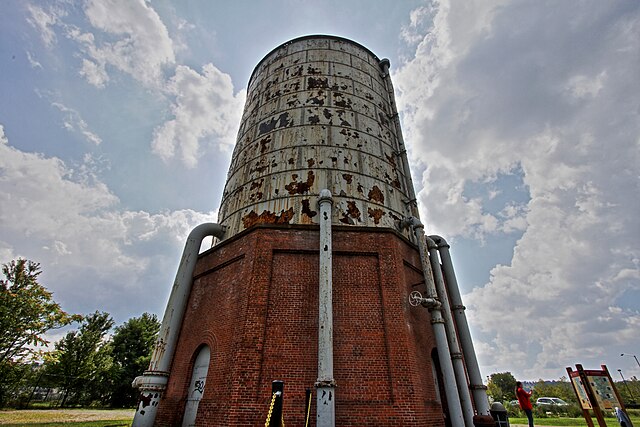Homestead Steel Works
Steel works in Pennsylvania, United States From Wikipedia, the free encyclopedia
Homestead Steel Works was a large steel works located on the Monongahela River at Homestead, Pennsylvania in the United States. Originally built for the Pittsburgh Bessemer Steel Company, the plant began rapidly expanding following its purchase by Andrew Carnegie in 1883. Much like the neighboring Edgar Thompson Works, it was served by tributary coal and iron fields, the Union Railroad 425 miles (684 km) long, and a line of lake steamships. The works was also the site of one of the more serious labor disputes in U.S. history, which became known as the Homestead strike of 1892. "Change and Continuity: Steel Workers in Homestead, Pennsylvania, 1889-1895".


History
Summarize
Perspective
The steel works were first constructed in 1881. Andrew Carnegie, (a Scottish emigrant), bought the 2 year old Homestead Steel Works in 1883, and integrated it into his Carnegie Steel Company.[1] For many years, the Homestead Works was the largest steel mill in the world and the most productive of the Mon Valley's many mills.
A series of industrial disputes over wages, working hours and contracts occurred in the early years of the works, leading to the Homestead strike, an industrial lockout and strike which began on June 30, 1892, culminating in a battle between strikers and private security agents on July 6, 1892.[2] The battle was one of the most violent disputes in U.S. labor history and the final result was a major defeat for the union and a setback for their efforts to unionize steelworkers.
In 1896, Carnegie built the Carnegie Library of Homestead in nearby Munhall as part of concessions to the striking workers.[citation needed] (This however has never been validated. Carnegie had the plans drawn up in the late 1880s, and run-ins with the Union bosses kept him from actually building it.)[citation needed]

In 1901, Carnegie sold his operations to U.S. Steel. On January 6, 1906 it was announced that the company would undergo upgrades and expansions worth seven million dollars ($245 million today.[when?]) The workforce peaked at 15,000 during World War II.[3] William J. Gaughan was a Senior Designer of Operations Planning and Control at the company who developed computer systems to aid in automation of various operations. Throughout his management career, Gaughan had developed an interest in the history of Homestead Steel Works and began to collect photos and pamphlets regarding the company.[4] The plant closed in 1986 because of a severe downturn in the domestic steel industry, from which the industry still[when?] has not recovered.


A few remnants of the steel works were not destroyed, including twelve smokestacks in the middle of the Waterfront development.[5] As of its opening in 1999, the land is partially occupied by The Waterfront, an outdoor shopping center.
See also
References
External links
Wikiwand - on
Seamless Wikipedia browsing. On steroids.
